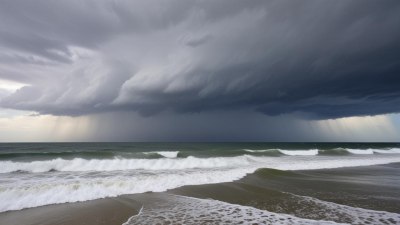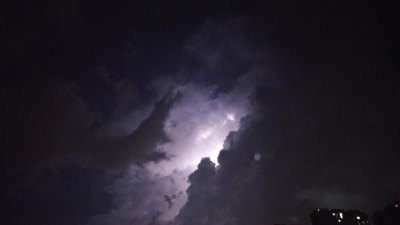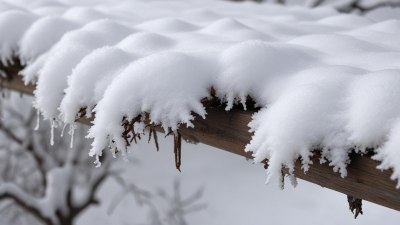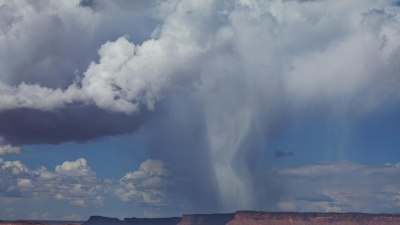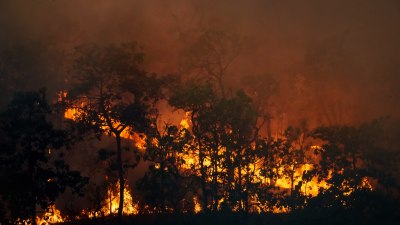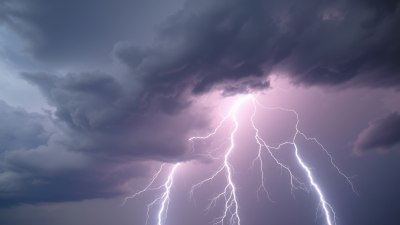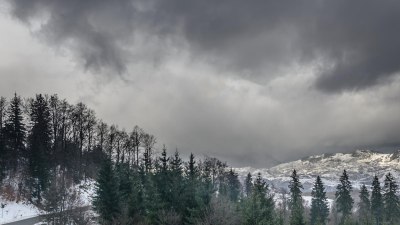How Precipitation Reaches the Ground Through Dry Air Layers
Explore how precipitation manages to reach the ground despite traveling through dry air layers, detailing atmospheric processes and impacts.
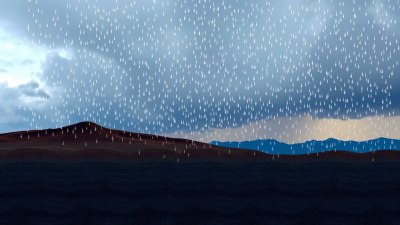
Image created with Flux Schnell
Precipitation is a fundamental component of Earth’s hydrological cycle, responsible for delivering vital moisture from the atmosphere to the surface. Yet, the journey of precipitation from cloud to ground is not always straightforward. In many instances, precipitation must fall through layers of dry air, which can alter or even prevent it from reaching the surface. Understanding how precipitation reaches the ground through dry air layers involves exploring the interplay between atmospheric moisture content, temperature profiles, and microphysical processes within clouds and the air beneath them.
The atmosphere is composed of various layers, each possessing different temperature and humidity characteristics. Precipitation typically forms in clouds when water vapor condenses into liquid droplets or deposits as ice crystals. However, not all cloud-processed precipitation survives the passage through lower atmospheric layers because dry air can induce evaporation or sublimation, reducing precipitation size or causing complete evaporation before it hits the ground.
The Formation of Precipitation
Before discussing how precipitation passes through dry air, it is essential to understand its formation mechanism within clouds. Precipitation usually starts with condensation nuclei—tiny particles such as dust or salt aerosols—that enable water vapor to transition into liquid droplets or ice crystals. Clouds develop with sufficient moisture and cooling, allowing vapor to condense around these nuclei.
Depending on the cloud’s temperature profile, precipitation may form as liquid raindrops, snowflakes, sleet, or hail. In warm clouds, typically those above freezing temperatures, small droplets collide and coalesce into larger droplets until they become heavy enough to fall. In cold clouds, ice crystals grow by vapor deposition and aggregation. When sufficiently large, these ice particles either fall directly or melt into raindrops if they encounter warmer layers below.
Dry Air Layers and Their Influence
Dry air layers are parts of the atmosphere where relative humidity is significantly below saturation (often less than 50%). These dry layers can exist at various altitudes beneath the cloud base, typically in the sub-cloud layer. When precipitation falls into such dry layers, an exchange of moisture and heat occurs between the falling particles and the surrounding air.
The dry air exerts an evaporative effect on falling precipitation. Liquid droplets or melting snowflakes lose mass as water vapor evaporates into the low-humidity air. For frozen precipitation, sublimation can occur, directly converting ice to vapor. The extent of evaporation or sublimation depends on factors like temperature, humidity, droplet size, and fall speed.
Evaporation and Sublimation: The Disappearing Act
Evaporation within dry air layers acts as a natural filter for precipitation, meaning that if the layer is thick and dry enough, precipitation may completely evaporate before reaching the ground. Observers on the surface might notice virga—precipitation that appears to fall from clouds but evaporates before touching the ground.
The rate of evaporation is governed by the vapor pressure gradient between the droplet surface and the ambient air. In highly dry layers, the air has a much lower vapor pressure than the droplet surface, speeding evaporation. Warm, dry air can dissolve more water vapor, increasing this effect.
Sublimation plays a similar role for ice crystals. Because sublimation requires additional energy compared to evaporation, it can cool the ambient air around the falling particles, sometimes creating temperature inversions or modulating atmospheric stability.
Environmental Factors Affecting Precipitation Survival
The ability of precipitation to reach the ground through dry air depends on several environmental factors. Key among these are the depth and humidity of the dry layer, ambient temperature profile, precipitation type, and initial drop size.
Dry Layer Depth and Relative Humidity: A shallow dry layer or one with higher relative humidity might not fully evaporate precipitation. Conversely, a deep, very dry layer significantly increases evaporation chances. Satellite and radiosonde data often reveal intricate vertical humidity structures that affect precipitation survival.
Temperature Profiles: Temperature controls both the phase of precipitation and the saturation vapor pressure of the air. Warmer temperatures increase evaporation rates due to higher saturation vapor pressures. Temperature inversions can trap dry layers near the surface, influencing how precipitation evolves as it falls.
Precipitation Type and Size: Larger raindrops have more mass and fall faster, reducing the time they spend in the dry sub-cloud layer, thus increasing their chance of reaching the surface. Conversely, small drizzle droplets or snow crystals are more vulnerable to evaporation or sublimation.
Microphysical Processes Within Precipitation
The microphysical characteristics of precipitation influence its interaction with dry air. These processes encompass droplet growth, break-up, aggregation, and melting during descent.
As precipitation falls through the dry layer, droplet size reduces due to evaporation, potentially leading to smaller droplets that fall more slowly or even dissipate entirely. This reduction in size also lessens the impact and spread of precipitation on the surface.
Melting snowflakes encountering warm dry air can partially melt, creating a mixture of ice and liquid water droplets, which may evaporate at different rates, complicating the net precipitation reaching the surface.
Observational Evidence of Precipitation Through Dry Air
Meteorologists frequently observe precipitation attenuation due to dry air layers using ground radar, satellite data, and surface observations. One notable phenomenon is virga, a common sight in arid or semi-arid regions. Virga is precipitation that visibly falls but evaporates before ground contact because of dry surface air.
Radar returns from precipitation areas may weaken as precipitation falls through dry layers, corresponding to evaporation losses. Weather stations may record no rainfall at the surface despite cloud precipitation aloft, indicating complete evaporation.
Implications for Weather Forecasting
Understanding precipitation’s interaction with dry air is crucial for accurate weather prediction. Forecast models must consider the vertical moisture and temperature structure to estimate surface precipitation accurately.
Incorporating sub-cloud evaporative processes improves rainfall forecasts in regions with complex humidity profiles, such as deserts or mountainous areas. Without accounting for dry air effects, forecasts might overestimate precipitation, impacting decision-making in agriculture, water management, and hazard preparation.
Role in Climate and Hydrology
Dry air layers influencing precipitation evaporation also affect local and regional climate by modifying surface moisture availability. Reduced precipitation reaching the ground can lead to drought conditions, affecting ecosystems and human activities.
Evaporative cooling associated with sublimation or evaporation of falling precipitation modifies atmospheric stability, potentially influencing convective cloud development and precipitation cycles.
Technological Advances in Studying Dry Air Impact
Recent advances in remote sensing, such as high-resolution lidar and radar systems, have enhanced the ability to study precipitation processes in dry layers. These tools can profile humidity and precipitation distribution with exceptional detail.
Numerical weather prediction models now often integrate microphysical schemes simulating evaporation and sublimation effects. The enhanced simulation of sub-cloud processes allows for better insight into how precipitation survives or dissipates in dry air.
The complex process of precipitation reaching the ground through dry air layers involves a delicate balance between atmospheric moisture, temperature, and microphysical interactions. Dry air acts as a controlling agent, often reducing or preventing precipitation from touching the surface through evaporation and sublimation. This dynamic has powerful implications for weather forecasting, climate understanding, and water resource management. Continuous research and technological advancements are improving our grasp of these processes, helping societies better anticipate and adapt to variability in precipitation influenced by dry air layers.
